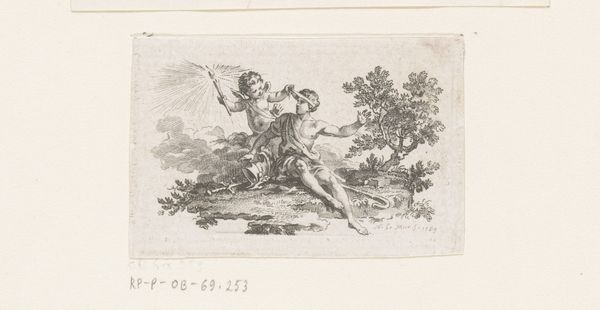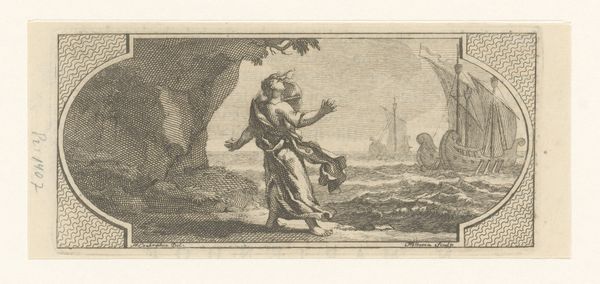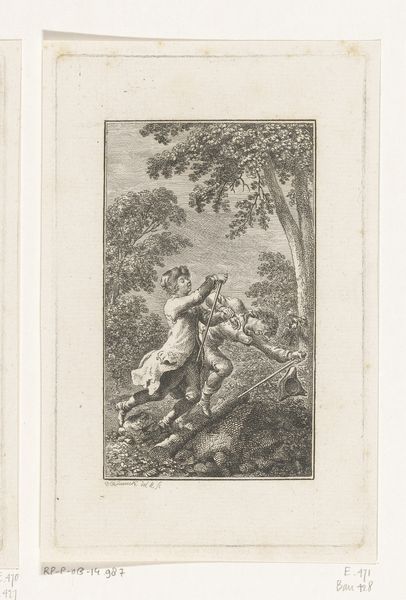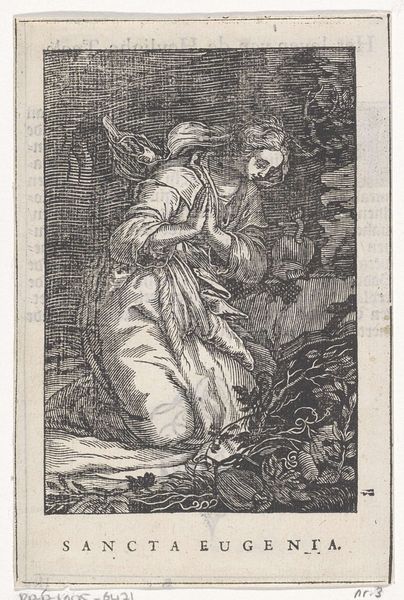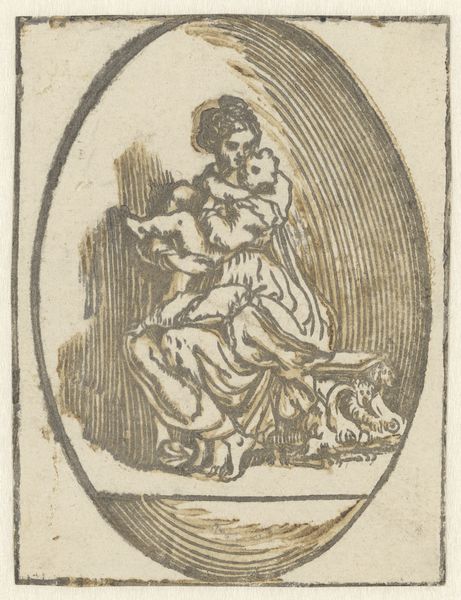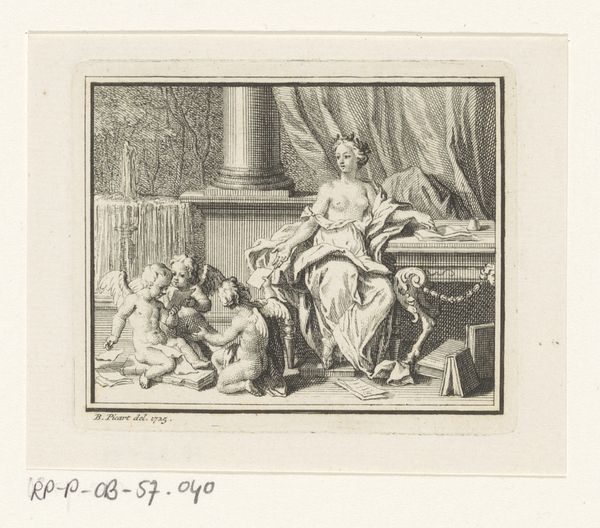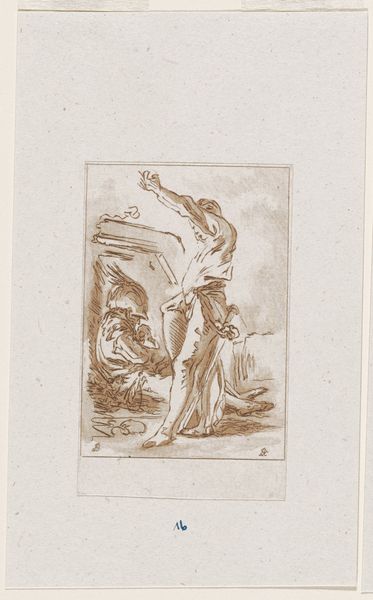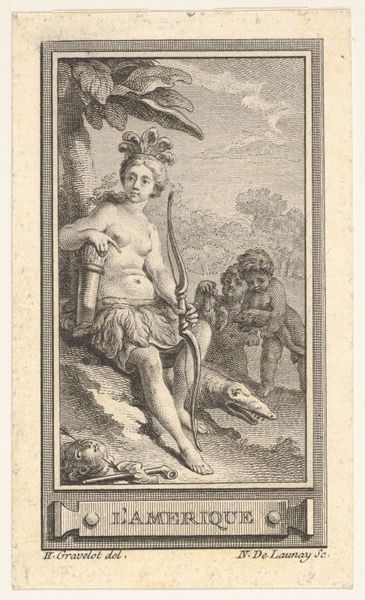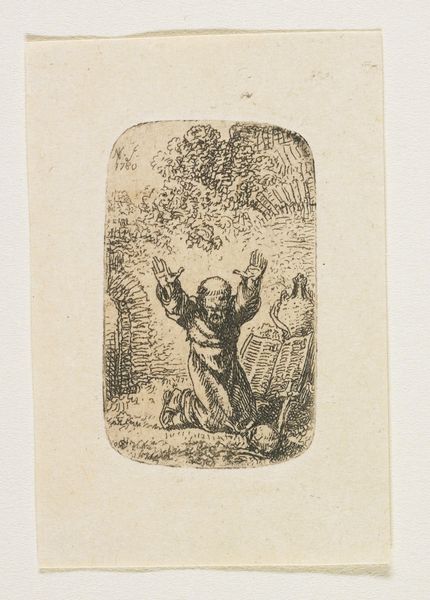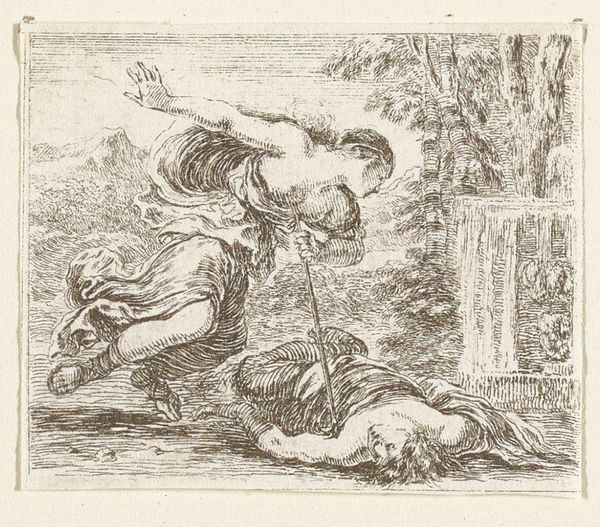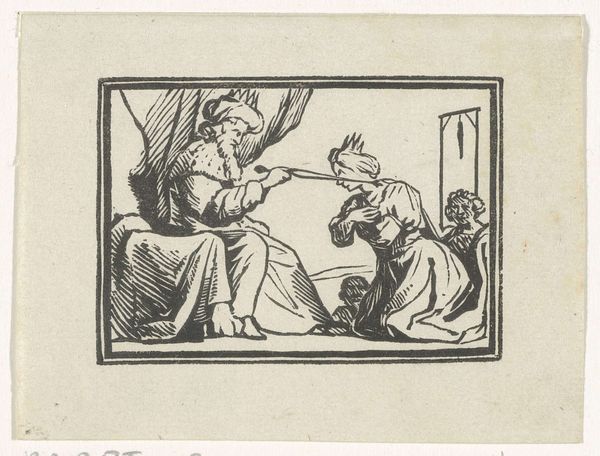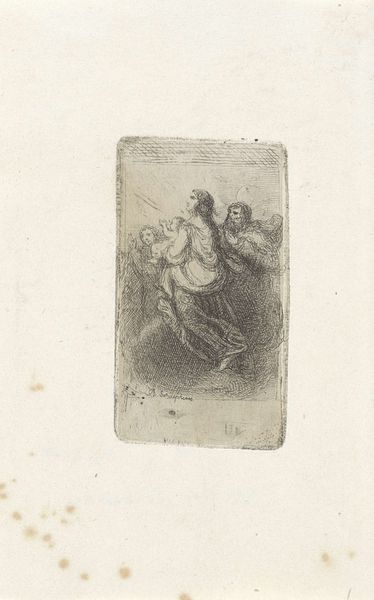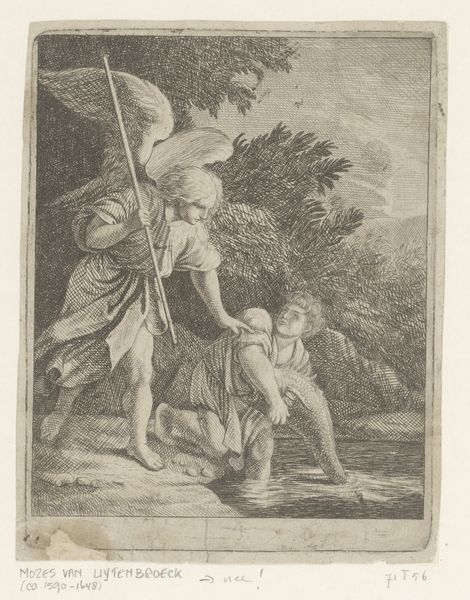
drawing, paper, ink
drawing
landscape
figuration
paper
ink
romanticism
nude
Dimensions: height 37 mm, width 71 mm
Copyright: Rijks Museum: Open Domain
Editor: Here we have Pieter Bartholomeusz. Barbiers’ drawing, "Seated Figure Stretching Out Her Arm," created between 1809 and 1837. It's made with ink on paper and the small scale gives it an intimate feel. What jumps out to you? Curator: Well, first, it's important to consider the Romantic period, when this work was made. How were artists challenging social and artistic norms? Think about the rising interest in individual emotion and the natural world. Barbiers gives us a figure in nature that speaks to the role of art reflecting the changing values of that era. Do you see a commentary on the idealized or classical body in contrast to the reality of the natural setting? Editor: I do see a contrast, like she's meant to be inside but finds herself outside... How does that relate to the social context? Curator: During the Romantic era, art academies still emphasized classical ideals, but you also have movements that sought authenticity and emotion in ordinary life. So, this work can be seen as negotiating those expectations, blurring the boundaries between the classical form and natural setting. It might reflect the era's fascination with untamed emotions, right? Also, nude figures were acceptable in ‘history painting,’ what might it mean in an ambiguous, natural scene like this? Editor: Maybe questioning those accepted boundaries and depicting nudity as less about the grand narrative and more about personal expression? It's almost a rebellion in ink! Curator: Exactly. Considering art as a product of these shifting perspectives allows us to appreciate how the image might’ve pushed boundaries within the contemporary artistic landscape. It makes us question, how does art shape—or challenge—our view of the world, even today? Editor: This gives me a lot to think about, thank you for broadening my understanding. Curator: It’s been enlightening for me as well. Seeing art through these historical lenses makes the viewing experience richer.
Comments
No comments
Be the first to comment and join the conversation on the ultimate creative platform.
